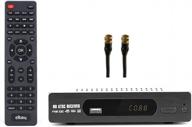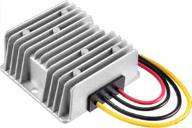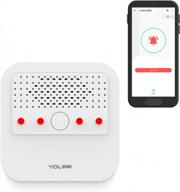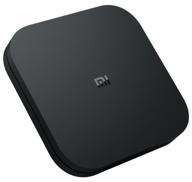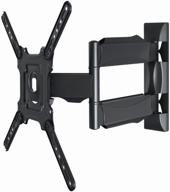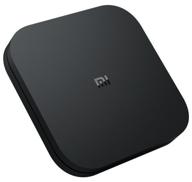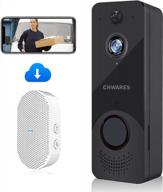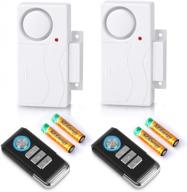Choosing the Right Home Theater System
With so many options on the market, choosing the right home theater system can be a daunting task. However, understanding your needs, budget, and setup considerations can help simplify the process. Here are some tips for selecting the ideal home theater system.
Types of Home Theater Systems
Home theater systems generally fall into three main categories:
- Ready-made systems - These all-in-one packaged systems include a receiver, speakers, and often a Blu-ray player. They provide an easy, affordable option for basic setups.
- Component systems - These allow you to select individual pieces like the receiver, speakers, and television. This offers more flexibility to customize, but requires more research.
- DIY custom installations - For ultimate control, many choose to piece together their own system selecting premium individual components, installation, acoustic treatments, and more.
Key Features to Consider
Some key features to consider when selecting a home theater system include:
| Feature | Description |
|---|---|
| Receivers | Look for necessary connections, audio formats, output wattage, and expansion capabilities. |
| Speakers | Choose appropriate drivers, directionality, impedance, and timbre matching for front, surround and subwoofer speakers. |
| Television | Consider size, resolution, refresh rates, and smart features. |
| Cables | Use quality cables designed for home theater like HDMI and oxygen-free speaker wires. |
Room Considerations
The room where you place your home theater system can significantly impact performance. Ideal rooms:
- Are rectangular with optimal dimensions
- Have dark colors to reduce light reflection
- Can accommodate proper speaker placement per dolby or THX guidelines
- Have acoustic treatments to absorb sound reflections
Consider where you will place the seating, screen, and speakers for the optimal viewing experience.
Set a Realistic Budget
Home theater systems range dramatically in price from a few hundred dollars for ready-made systems to tens of thousands for custom installations. Determine how much you can reasonably spend, but don't sacrifice too much quality for the sake of budget. Invest in the best speakers you can as that can make the biggest impact on sound.
Consider Your Needs
Finally, consider how you intend to use your home theater so you can select the right components. Will you use it primarily for movies, TV, gaming or music? This can dictate what audio formats you need, how many speakers to get, and what connectivity options are required. Planning your system around your needs and room constraints will ensure you end up with the ideal setup.
Choosing the perfect home theater system requires balancing many factors. Following these tips will help guide you to the right solution for an immersive home theater experience.
Another interesting products
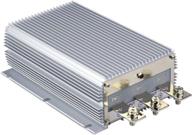

15 Review

Types of Home Theater Systems
If you're looking to create an immersive audiovisual experience at home, one of the first decisions you'll need to make is choosing the type of home theater system. There are a few main options, each with their own pros and cons.
Ready-Made Systems
Ready-made, all-in-one home theater systems offer a simple and budget-friendly option. These systems include a receiver, a set of speakers, a subwoofer, and sometimes a Blu-ray player. Major brands like Sony, Samsung, LG, Yamaha, and others offer ready-made systems ranging from a few hundred to a couple thousand dollars. For example:
- LG LHB645N - $499 5.1 channel system with 1080p Blu-ray player
- Sony HT-S350 - $398 2.1 channel soundbar system
- Yamaha YHT-4950U - $1,600 7.1 channel 4K Ultra HD system
Ready-made systems are quick and easy to set up, even for beginners. However, you have less flexibility and upgradability compared to component systems.
Top products in 🎬 Home Theater Systems


11 Review

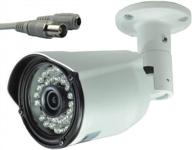

29 Review

Component Systems
Component home theater systems allow you to hand select each piece of equipment, like:
- Receiver - Processes audio and delivers it to speakers. Look for power, input/output options, decoding capabilities.
- Speakers - Key is finding matched sets for front, surround, and subwoofer speakers. Many brands like Klipsch, Polk, Definitive Technology offer packaged sets.
- Television - Size, display type (LCD, OLED), resolution, and smart features are key considerations.
- Media player - Like a Blu-ray player or game console.
This modular approach provides more flexibility to customize and expand your system over time. You can start with a basic setup and upgrade pieces incrementally. Component systems also enable choosing higher quality individual pieces. On the downside, it does require more research and expertise to select complementary pieces of equipment. Budget component systems can start below $1000, while high-end systems with large TVs and premium speakers can cost tens of thousands.
Custom Installations
For home theater enthusiasts with large budgets, custom installations offer the ultimate experience. This involves hiring specialists to design and integrate all the components of your system for maximum performance. Key elements of custom installations include:
- Acoustic treatments to optimize audio
- Hidden wiring and speakers installed in walls and ceilings
- Automated control systems like Crestron for easy operation
- Premium display technologies like laser projectors and motorized screens
- Lighting, seating, and décor designed for optimal viewing
While incredibly immersive, these bespoke installations require significant budgets ranging from $20,000 to over $100,000. This route is best for dedicated home theater spaces requiring the highest quality.
With many options available, you can find a home theater system for practically any budget. Carefully weigh the pros and cons of different configurations to meet your needs.
Home Theater Speaker Setup
One of the most important parts of any home theater system is properly setting up the speakers. Correct speaker placement and configuration can make a dramatic difference in your audio experience. Follow these tips for ideal home theater speaker setup.
Speaker Placement Guidelines
Ideally, speakers should be positioned at ear level when seated and aligned with the screen. Some general placement guidelines include:
- Front L/R speakers - Place equidistant from the screen about 2-3 feet from boundaries.
- Center channel speaker - Place directly above or below the screen oriented towards the listeners.
- Surround speakers - Position to the sides of the listeners about 2-3 feet above ear level.
- Subwoofer - Place centrally along the front wall or a back corner of the room.
Additionally, speakers should point towards the primary listening area and have separation from walls to reduce reverberations.
Speaker Configuration
For surround sound, home theater systems commonly use these configurations:
| Configuration | Speakers |
|---|---|
| 2.1 | Left, right, subwoofer |
| 5.1 | Front L/R, center, surround L/R, subwoofer |
| 7.1 | Front L/R, center, surround L/R, rear surround L/R, subwoofer |
The first number indicates stereo or surround channels, while the second number refers to the subwoofer channel.
Tips for Placement
Here are some additional tips for optimal speaker placement:
- Angle surround speakers towards the center listening position.
- Keep left, right, and center speakers at the same height and distance from TV.
- Place surround rear speakers behind listeners, not too wide.
- Add acoustic panels and bass traps to improve sound quality.
- Use speaker stands or wall mounts to achieve ideal positioning.
Calibration
After placement, calibrate speaker levels and delays using your AV receiver's settings. Tweak levels until volume across channels is balanced. You can also invest in professional calibration services for optimal audio tuning.
Following proper home theater speaker placement guidelines can make a huge difference in your surround sound experience. Take time to place and tune speakers optimally to fully enjoy your system's audio capabilities.
Similar products
Getting the Most Out of Your Home Theater
A home theater can be a major investment. To get the most out of yours, optimize everything from the equipment settings to the viewing environment.
Tweak Your Equipment Settings
Modern AV receivers and components have extensive configuration options that can enhance your home theater experience if properly set up:
- Calibrate speaker levels and delays using auto setup features and a decibel meter.
- Enable room correction like Audyssey MultEQ to account for room acoustics.
- Adjust individual speaker settings like crossovers and distances.
- Use audio formats like Dolby Atmos height channels for more immersive surround.
- Enable HDMI enhancements like 4K/120Hz, VRR, ALLM depending on your devices.
Consult your owner’s manuals to dive into the settings specific to your components.
Treat Your Room
To improve audio quality, treat acoustic problems in your room such as:
- Add sound absorption panels to reduce reverb and echo.
- Install bass traps in corners to smooth low frequencies.
- Use thick curtains to minimize sound transmission through windows.
- Seal doors, gaps, and vents that can allow noise leakage.
Consider hiring an acoustical consultant if you need help identifying issues. This can make a substantial impact on sound quality.
Choose the Right Screen
To maximize your video experience, select the appropriate screen based on factors like:
- Screen material - Matte white, grey screen fabrics improve contrast.
- Gain - Higher gain screens amplify brightness.
- Viewing angles - Wider viewing angles prevent brightness drop off.
- Ambient light control - Dark environments may require less gain.
Professional calibrator ISF certification ensures optimal color and contrast. Size your screen appropriately for your room and seating distance.
Automate With a Control System
For one-touch control, install a home automation system like Control4, Savant or Crestron. Key benefits include:
- Centralized on/off for all devices.
- Integrated control of lights, shades, climate.
- Remote access from tablets and phones.
- Customizable scenes for different media.
This removes the hassle of juggling multiple remotes and components.
Enhance Seating and Viewing
To complete the environment, look at:
- Comfortable, spacious seating aimed at screen center.
- Dimmable lighting suitable for dark viewing.
- Minimal distractions and reflective surfaces.
- Acoustic treatments to minimize outdoor noise.
Your home theater equipment is only part of the equation - optimize the entire room for the ultimate experience.
How to Use Amazon Prime to Buy Home Theater Systems
Amazon Prime provides an easy and convenient way to buy home theater systems and components. With access to a huge selection and fast shipping, you can build the home theater you want without leaving your home.
Find the Right Equipment
Amazon stocks home theater products from top brands like Sony, Samsung, LG, Yamaha, Klipsch, and more. You can easily browse and compare different systems and individual components like:
- Receivers
- Speakers and subwoofers
- Blu-ray players
- Projectors and screens
- Cables and accessories
Search filters and product information make it easy to identify equipment that fits your needs and budget. Customer reviews also provide valuable insight.
Take Advantage of Fast Shipping
As a Prime member, you get access to free two-day shipping on most items. This means you can quickly get your selected home theater products delivered right to your door.
For especially speedy delivery, look for items labeled "Amazon Prime FREE One-Day Shipping". You can build an entire home theater in just a couple days without ever leaving home.
Streamline Setup with Pro Installation
For help setting up your new home theater equipment, you can add professional installation as an extra service during checkout on many products. Installers will deliver, unpack, set up, and test your new AV components so you can start enjoying your system right away.
Enjoy Member-Only Deals
Take advantage of Prime-exclusive deals, discounts, and sales when buying home theater items like "Prime Early Access Deals" and "Prime Exclusive Savings". This can help you save money on high-end gear for your home theater.
With its wide selection, fast shipping, and money-saving perks, using your Amazon Prime membership is a great way to conveniently purchase home theater systems and accessories.
What Are The Key Elements Of A Home Theater System??
The key elements of a home theater system can vary depending on the source, but here are some common components that are mentioned across multiple search results:
What Are The Different Types Of Speakers That Can Be Used In A Home Theater System??
There are several types of speakers that can be used in a home theater system. Here are some of the most common types:
It's important to note that the number and type of speakers you need will depend on the size and layout of your room, as well as your personal preferences and budget.
What Are The Differences Between Tower Speakers And Bookshelf Speakers For A Home Theater System??
Tower speakers and bookshelf speakers are two common types of speakers used in home theater systems. Here are some differences between the two:
Tower Speakers:
Bookshelf Speakers:
Ultimately, the choice between tower speakers and bookshelf speakers will depend on your personal preferences, budget, and the size and layout of your room.





